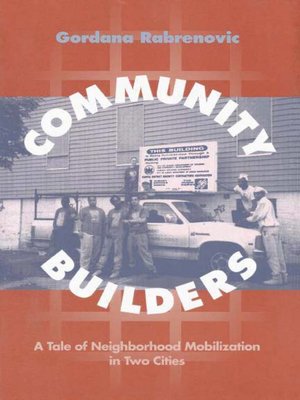
Sign up to save your library
With an OverDrive account, you can save your favorite libraries for at-a-glance information about availability. Find out more about OverDrive accounts.
Find this title in Libby, the library reading app by OverDrive.



Search for a digital library with this title
Title found at these libraries:
| Library Name | Distance |
|---|---|
| Loading... |
In the 1980s the failure of corporate strategies and trickle-down economics led to gross inequalities among many U.S. neighborhoods and cities. By examining and comparing a gentrifying and a low-income neighborhood in two medium-sized cities, Gordana Rabrenovic shows how the problems they faced are typical of a number of neighborhoods nationwide. In particular, Rabrenovic focuses on the relationship between neighborhood associations and urban restructuring, arguing persuasively that the success of neighborhood associations depends more on the city in which the neighborhood is located than on the neighborhood itself. Her tale discusses two very different cities with distinct political economies: Albany, a healthy service sector city, and Schenectady, a declining manufacturing city. Acknowledging both the value and limits of collective action, Rabrenovic addresses issues of particular relevance in urban areas, such as land use and crime, as well as the need for neighborhood organizations to forge links with local elites and other neighborhoods, and to engage and bring together poor and minority residents. Her analysis of neighborhood-based mobilization, preservation, and revitalization illuminates the ways in which grassroots issues intersect with prevailing political agendas and the national economy, as well as how issues such as race and class affect daily community politics.







